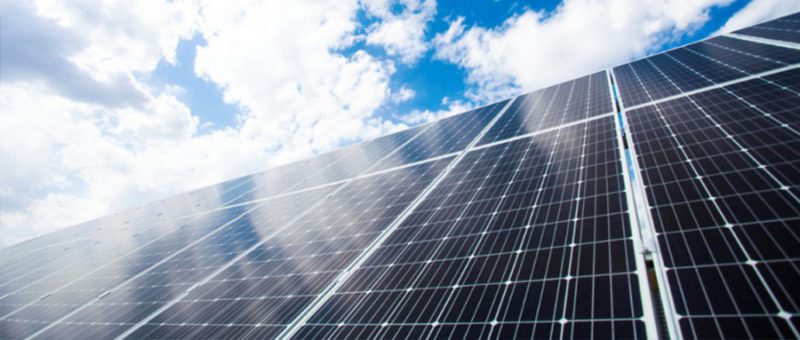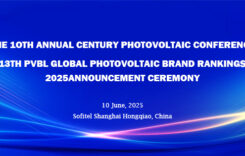PVTIME – With a cost reduction of more than 90% over the last decade or more, solar power is now considered the world’s most important renewable energy source for providing electricity or heat. Climate change and the scarcity of traditional energy sources have triggered a major manufacturing shift in the solar cell industry. Many PV companies, especially the solar giants in China, appear to be altering their attention from PERC to TOPCon solar cells by expanding TOPCon manufacturing projects across the country.

Tunnel Oxide Passivated Contacts (TOPCon) solar cells are seen as the most promising next generation of mainstream solar cell technology to replace PERC cells, with higher efficiency potential and stability as PERC cells approach their peak efficiency. TOPCon is now the second most commercially produced silicon cell after PERC, with heterojunction (HJT) cells in third place.
Dramatic increase in TOPCon production capacity in China
In May 2021, LONGi, a PV giant and industry benchmark, announced its plan to launch TOPCon production projects in Xixian City and Ningxia City, China, with production capacity of 15GW and 5GW respectively, marking the first mass production plan of TOPCon in China. Meanwhile, Jolywood, a leading Chinese manufacturer of n-type bifacial modules using TOPCon technology, announced its plan to build a 16GW TOPCon production line.
Then, a number of Chinese PV manufacturers such as JinkoSolar, Trina Solar, JA Solar, TW Solar, DAS Solar, GCLSI, Astronergy (Chint), Drinda, Suntech, Mubang High-Tech, EGING PV (Keenstar), Royal Group are betting on TOPCon. As of February 2023, the production capacity of TOPCon cells in China has reached 69.75GW, according to Haitong Securities, and 474GW of new additional capacity plans for TOPCon have been announced.
Technology, efficiency, cost and profit drive Chinese companies to TOPCon
TOPCon easily increases cell efficiency by combining an ultra-thin tunneling oxide passivation layer with a PERC solar cell. The additional layer on the cell can allow the module to absorb more sunlight by acting as a barrier to trap unabsorbed light. The PERC has a bifaciality of 70% while the TOPCon has 80% with an additional tunneling oxide passivation layer to increase the sunlight absorption rate. The theoretical maximum conversion efficiency of TOPCon could reach 28.7%, according to the Institute for Solar Energy Research in Hameln, Germany (ISFH), higher than PERC’s 24.5% and HJT’s 27.5%, and closest to the theoretical maximum conversion efficiency of crystalline silicon solar cells of 29.43%.
With a few additional steps, existing PERC production lines can be converted to produce TOPCon at relatively low cost compared to other n-type cells such as HJT and IBC, which require total difference production lines at much higher cost. The PERC production lines can be upgraded to produce TOPCon with non-crystalline deposition (LPCVD/PECVD) and coating equipment at a cost of 60 to 80 million yuan per GW.
In terms of efficiency, Chinese TOPCon manufacturers claim an efficiency of around 25.0%. It could be increased by 0.2-0.3% by adopting SE technology. When the solar cells are put into the panel, taking the M10 bificial 144 TOPCon module 570-575W as an example of the mainstream products, the conversion efficiency is about 24.2%, about 0.8% higher than that of PERC.
The yield of TOPCon production varies from company to company. The additional processing steps are important factors in the yield rate. The top ones have achieved the yield rate for TOPCon as the same as that of PERC around 97-98%, but most of the production only reach 93-95%, which makes it crucial to reduce the capital cost.
The overall advantages of TOPCon, especially its additional energy yield and low cost, make it favourable for Chinese PV manufacturers.
TOPCon expansion in China continues
Growing global demand for solar power has led to an increase in production capacity, and Chinese PV manufacturers have made ambitious expansion plans to meet the high demand in the future.
In March 2023, LONGi announced its plan to add 30GW of high-efficiency n-type TOPCon solar cell production capacity in Ejin Horo Banner, Inner Mongolia, China, with a conversion efficiency of more than 25% in volume cell production for centralised photovoltaic power plants, with a total investment of 7.777 billion yuan.
The top heavyweights have never stopped expanding to maintain their leading positions. By the end of 2023, the production capacity of TOPCon is expected to reach 477GW, which is equal to PERC, according to data released by InfoLink. Meanwhile, there will be more than 17 manufacturers with production capacity of 10GW and above of TOPCon, following JinkoSolar reached 10GW in 2022. And it is estimated that more than 50GW of TOPCon will be provided by new players in the industry.
How long can TOPCon benefit Chinese manufacturers?
Although the production capacity of TOPCon in 2023 is on an upward trend, there are many factors that could negatively affect it. First, it takes time for new projects to reach production, as it takes about 3-6 months to complete infrastructure and equipment, and at least 3 months to adjust them to be fully operational. In addition, the shortage of high-purity quartz sand in the market has led to a tight supply of silicon wafers, resulting in lower production of n-type silicon rod. And n-type requires a larger amount of high-purity quartz sand than p-type, resulting in a vicious cycle of raw material shortages. In addition, TOPCon production may face a shortage of n-type wafers and other raw materials in H2 2023 due to the large volume of TOPCon cell shipments in Q3 2023. Therefore, raw materials, especially n-type wafers, will be crucial for solar cell manufacturers to achieve their target of 135GW of TOPCon cell output. And equipment suppliers will be busy and rich, by the way.
TOPCon is not the only superstar in China. While TOPCon technology is developing rapidly, the growth of HJT cells and IBCs is also accelerating. Newly added production capacity and module output of HJT in China are expected to exceed 50GW and 10GW respectively by 2023. IBC related technology, led by LONGi and Aiko Solar in China, is expected to reach 10GW of module shipments in 2023. PERC, which has a market share of around 60% in 2023, is then expected to be replaced by these products, with its market share estimated at less than 30% in 2024.
While most companies have opted for TOPCon and HJT technology, Aiko Solar went straight to IBC technology and used it as the basis for its own patented n-type ABC product, achieving a conversion efficiency of 22.8-23.5% with its 210 n-type ABC module, which was launched in June 2021. According to public data, more than 7 billion yuan has been invested in Aiko Solar’s new generation of high-efficiency n-type solar cells, as IBC/ABC requires a completely different manufacturing process with high capital costs compared to TOPCon.
Meanwhile, all advanced technologies, including TOPCon, HJT and IBC, are involved in the research and development of LONGi. TOPCon is regarded as a transitional product in LONGi, and HPBC is the core player for the next generation. A 30GW HPBC production project of LONGi is being ramped up in Xi’an City, and another 4GW of HPBC has been set up in TAizhou City, China. HPBC, which is a p-type IBC, is LONGi’s investment in mass production for the distributed PV market. The conversion efficiency of LONGi’s HPBC in mass production is 24.8%, which can be improved for higher efficiency and lower cost, according to LONGi.
Nevertheless, most Chinese solar cell manufacturers are focusing on the growth of TOPCon. For commercial purposes, both the development of solar cell technology and the cost of mass production need to be addressed, and Trina Solar revealed that TOPCon will be preferred to other solar cells for the next 2-3 years to extend the life of production lines. Jinko Solar believes that TOPCon will be the leading passivated cell technology in the next 4-5 years as it offers the best combination of efficiency and reliability in terms of cost and ease of upgrading production lines.












